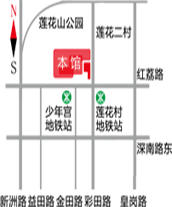
- The joint exhibition reminisces about the masters, and the brushwork on the wall reveals the magnificent scenery of the rivers and mountains - written before the exhibition "So Many Beauties in the Rivers and Mountains"
-
Gong Liang, President of Nanjing Museum
Mr. Fu Baoshi is one of the most outstanding art theorists and painters in 20th century China. In his early years, he delved into ancient books, researched cultural relics, explored and verified them, clarified their meanings, and became renowned in the academic community for his profound research on the history of Chinese art. He became a true pioneer and practitioner of modern Chinese art history; In his later years, he combined life, comprehended tradition, kept up with the times, boldly innovated, and led the development trend of Chinese painting in the mid-20th century with the important discourse of "the mind has changed, and the pen and ink cannot remain unchanged.". His artistic practice and historical achievements have extraordinary significance in the history of modern Chinese art.
The gentleman is passionate about nature, society, life, and art. The captivating spirit and inner charm contained in his paintings come from his love and sincerity for life. He devoted his whole life to the inheritance, reform, and innovation of Chinese painting, was brave in exploration, diligent in creation, and left behind many wonderful and magical paintings. His paintings stand out among the crowd, his landscape paintings are full of vitality, his figure paintings are vast and ancient, all of which are of extraordinary realm, full of poetry, and have a profound influence. He grasps the characteristics of China's mountains and rivers and the development of the times with a keen mind, draws on and absorbs foreign artistic talents with an open mind, endows Chinese painting with new realms, new ideas, new brushstrokes, and new content, and becomes an outstanding representative of the Chinese New Jinling Painting School.
The gentleman revered Chairman Mao Zedong throughout his life. Exploring the creation of Mao Zedong's poetic landscape paintings is a positive initiative of Fu Baoshi, who was moved by the times and adapted to them. He grasped the characteristics of the country's mountains and rivers and the development of the times with keen thinking, and his artistic practice has extraordinary significance in the history of modern Chinese art. In September 1959, on the eve of the 10th anniversary of the founding of the People's Republic of China, Mr. Fu and Mr. Guan Shanyue collaborated to create a large-scale traditional Chinese painting "The Beautiful Mountains and Rivers" for the Great Hall of the People, inspired by Mao Zedong's "Spring in Qinyuan". Its grandeur, new artistic conception, and beautiful layout are rare in the world, symbolizing the national cultural mentality of an era and establishing a new aesthetic paradigm for national painting. Renowned as the most famous Chinese painting work that combines Mao Zedong's revolutionary realism and romanticism. Fu Baoshi later wrote in his article "Beijing Painting Record": "We strive to integrate the delicate and gentle Lingnan style of Guan Shanyue with my bold and profound style in the painting, each with its own unique features. We must paint with vivid strokes and majestic momentum, without any delicate or powerless expression.".
Both Guan Shanyue and Fu Baoshi are prominent figures in the modern Chinese calligraphy and painting industry, and their interactions have a history. After collaborating on "So Many Beauties in Jiangshan", the two of them went to Jilin, Yanbian, Changbai Mountain, Harbin, Mudanjiang, Jingbo Lake, Shenyang, Anshan, Qianshan, Fushun, Lvda and other places to sketch and paint together from June to September 1961, arranged by the General Office of the State Council. They were deeply moved by the The gentleman revered Chairman Mao Zedong throughout his life. Exploring the creation of Mao Zedong's poetic landscape paintings is a positive initiative of Fu Baoshi, who was moved by the times and adapted to them. He grasped the characteristics of the country's mountains and rivers and the development of the times with keen thinking, and his artistic practice has extraordinary significance in the history of modern Chinese art. In September 1959, on the eve of the 10th anniversary of the founding of the People's Republic of China, Mr. Fu and Mr. Guan Shanyue collaborated to create a large-scale traditional Chinese painting "The Beautiful Mountains and Rivers" for the Great Hall of the People, inspired by Mao Zedong's "Spring in Qinyuan". Its grandeur, new artistic conception, and beautiful layout are rare in the world, symbolizing the national cultural mentality of an era and establishing a new aesthetic paradigm for national painting. Renowned as the most famous Chinese painting work that combines Mao Zedong's revolutionary realism and romanticism. Fu Baoshi later wrote in his article "Beijing Painting Record": "We strive to integrate the delicate and gentle Lingnan style of Guan Shanyue with my bold and profound style in the painting, each with its own unique features. We must paint with vivid strokes and majestic momentum, without any delicate or powerless expression.".
magnificent scenery of Northeast China and created nearly a hundred works. The two masters held an art exhibition for this trip and jointly published "Selected Sketches of Fu Baoshi and Guan Shanyue from Northeast China" (Liaoning Fine Arts Publishing House, 1961).
In 2012, it coincided with the centenary of Mr. Guan Shanyue's birth and the 15th anniversary of the establishment of the Guan Shanyue Art Museum. To express congratulations, at the invitation of the Guan Shan Yue Art Museum, the Nanjing Museum has selected 50 pieces (sets) of Fu Baoshi's works from its collection to hold an exhibition on the second floor of the Guan Shan Yue Art Museum. At the same time, Mr. Guan Shanyue's works will be exhibited on the first floor of the art museum. This is the second collaboration between the two museums, following their successful collaboration in September 2010 on the "Journey to a Foreign Land - A Special Exhibition of Chinese Painters' Foreign Sketching in the 1950s and 1970s". It is also the first time in half a century that the two masters have met separately. We hope to use this exhibition to fulfill the wish of the masters to unite and showcase together, and to provide high-quality cultural services to the public.
It is preface.



